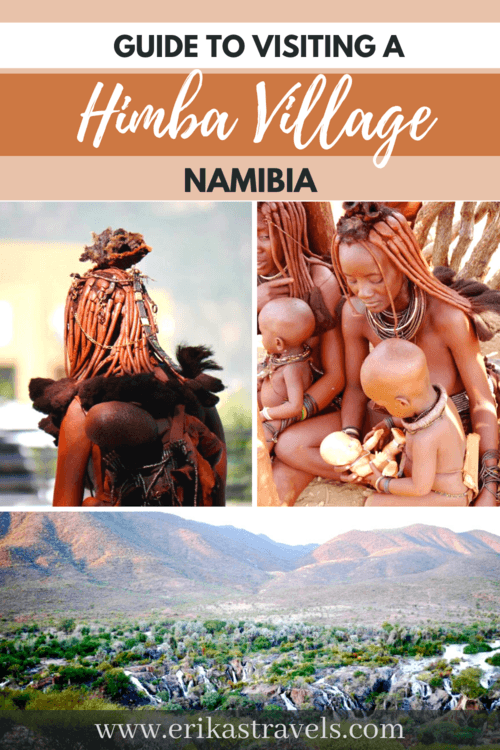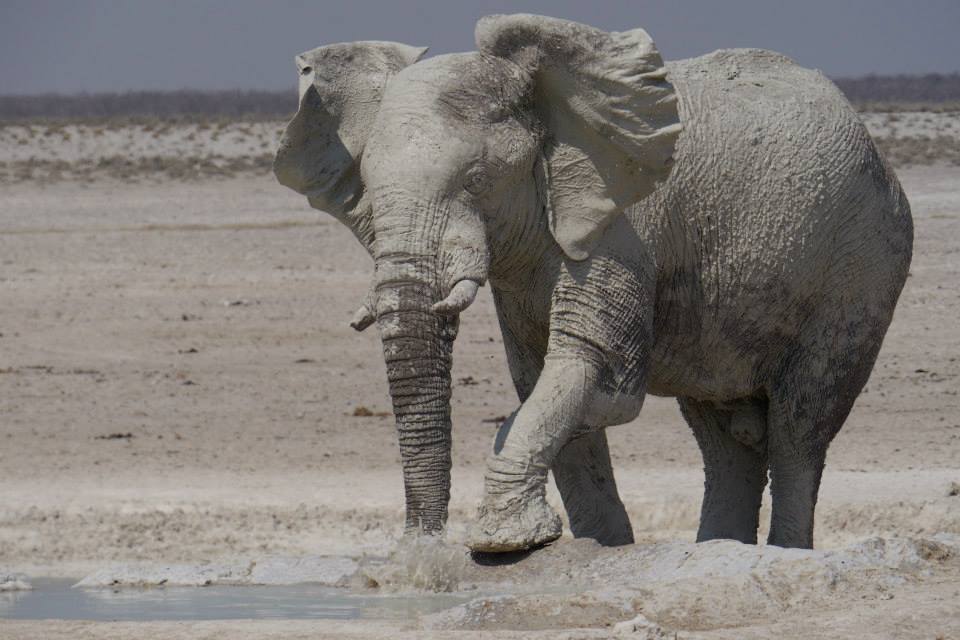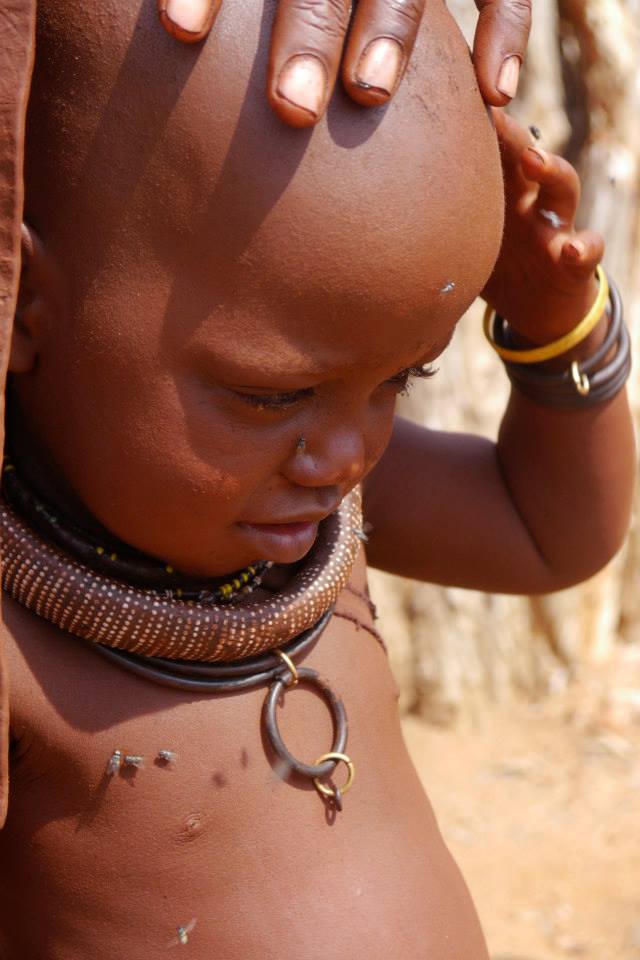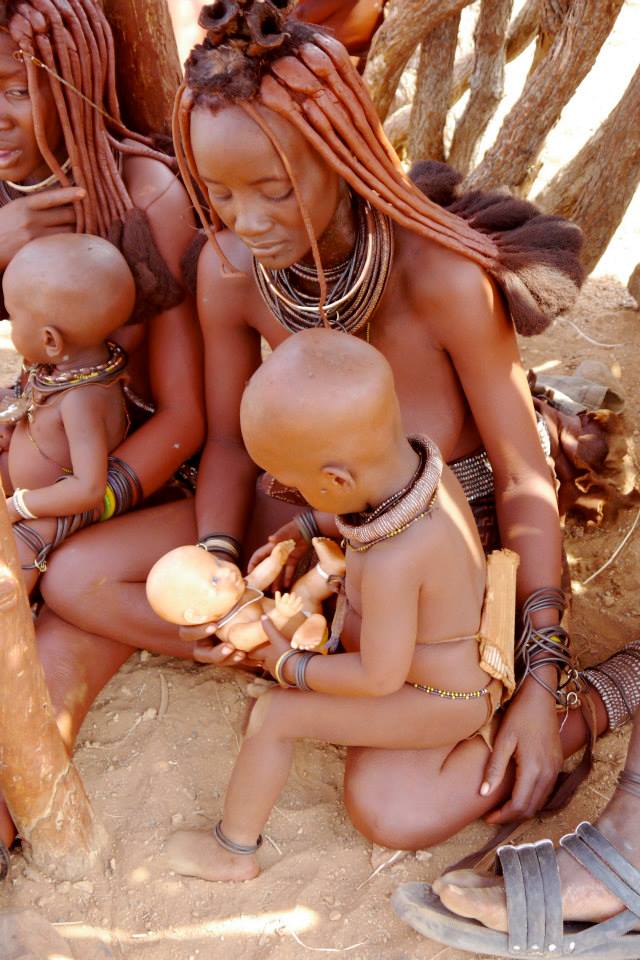Visiting a Himba Village from Opuwo
Of all the incredible places to visit in Namibia, the Kunene Region is among my favorite. The area is wild. It is remote. And it is seemingly untouched by the influences of the West.
During my year-long stay in Namibia, I traveled to the country’s untouched northwest corner on two occasions. On my first trip to the area, I joined a group of friends on a memorable weekend getaway to Epupa Falls–an impressive patchwork of hundreds of small rivulets that cascade into the river separating Namibia from Angola. On my return, I retraced the steps of my previous visit and included a short guided visit to a traditional Himba village.
WHO ARE THE HIMBA?
The Himba are one of Namibia’s most distinctive ethnic groups. Often romanticized and regarded as a culture that is untouched by modernity, they are close relatives to the pastoralist Hereros that inhabit the red rock deserts of Damaraland. Their lifestyle has seemingly changed very little since recorded history and they still cling to many of their customs from the precolonial era.
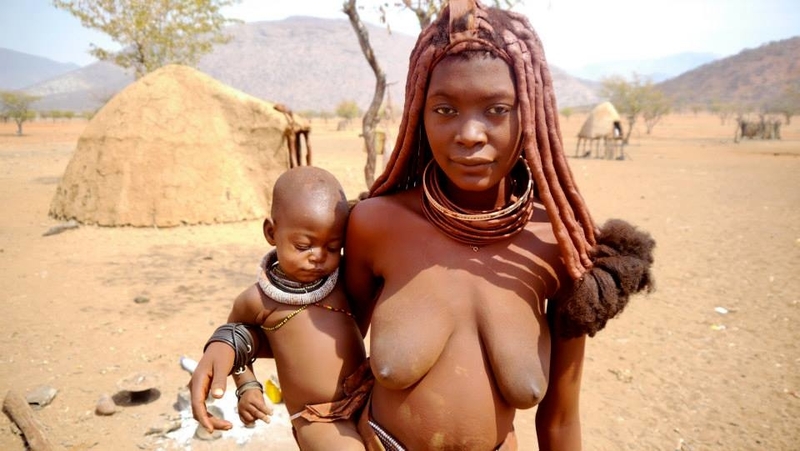
Himba are famous for applying a coat of red ochre to their bodies and hair. Women adorn themselves with cow skins and leave their breasts exposed, while men traditionally wear animal hides around their waists and spend their days herding cattle.
OPUWO: HUB OF NAMIBIA’S KUNENE REGION
The one-street town of Opuwo is the administrative and political capital of the Kunene region and the heart of the Himba homeland. What it lacks in historical and architectural beauty, it more than makes up for with its colorful, intriguing and eclectic mix of ethnic groups.
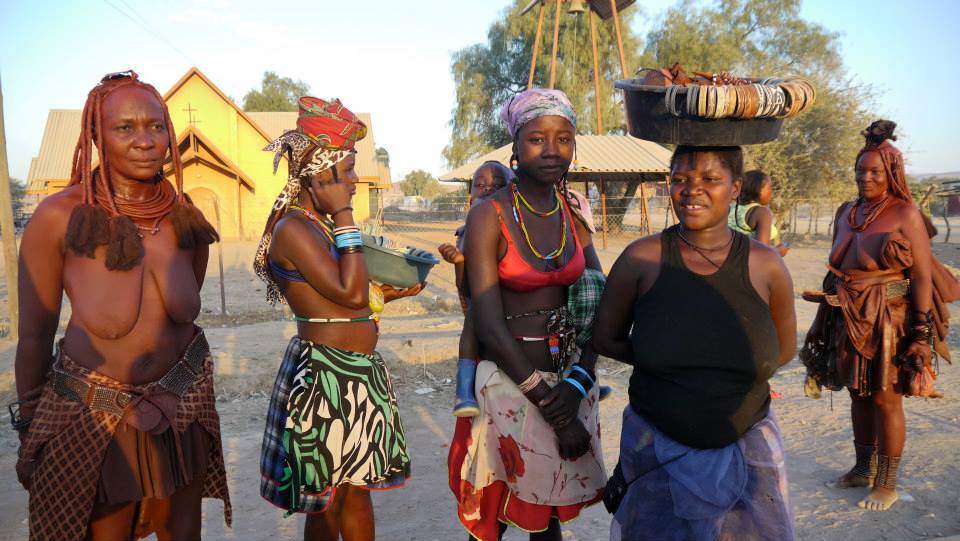
Opuwo and its surroundings remained impressed in my mind for weeks after I traveled there. Never in my life, had I visited a destination that seemed so foreign and removed–both culturally and geographically–from my reality in the West. I remember thinking that the town seemed to teeter precariously on the edge of the earth, as though any slight change would make it drop off the face of the planet altogether. Even the city’s name Opuwo translates to “the end,” as though it marks the last inhabited corner on Earth.
-
WHERE TO STAY IN OPUWO
Though Opuwo is the gateway to Namibia’s Kunene Region, the small dusty town is a remote outpost with few tourist amenities. As budget travelers, we found Abba Guesthouse to be a suitable option. Had we had slightly larger budgets, we would have loved to stay at the Opuwo Country Lodge.
HIMBA VILLAGE TOUR
A handful of Himba villages lie on the road between Opuwo and Epupa Falls. The road to reach the villages is bumpy, potholed and unpaved. During the drive, I sat in a small 2WD vehicle, holding my breath as we navigated the ridges and dips in the road and swerved around the sharp stones that seemed to have a knack for popping up in front of our tires.
Though it is possible to view the villages informally without a guide, I highly suggest hiring a local to show you around—for without one, it is nearly impossible to learn about the local way of life.
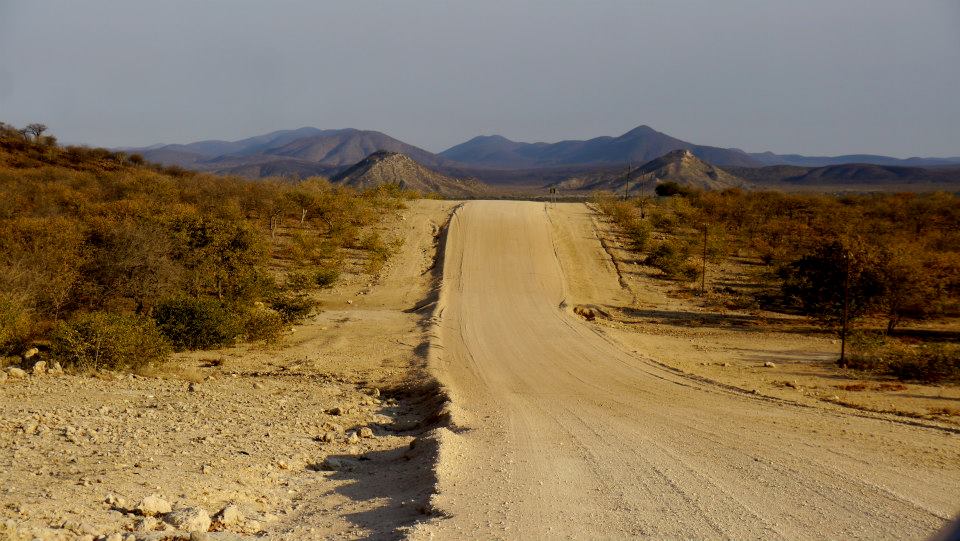
Initially, I must admit I was a bit skeptical of visiting a Himba village. I felt as though I would be an intruder and was wary as my position as a curious westerner.The Himba that inhabit the remote villages of Kunene are not tourist props. They do not pose in order to get money from camera-clicking tourists.
They are just men, women, and children who are going about their daily lives in the same way they have for centuries. To barge in on their homes and shove cameras in their faces, is both culturally insensitive and disruptive of the Himba way of life.
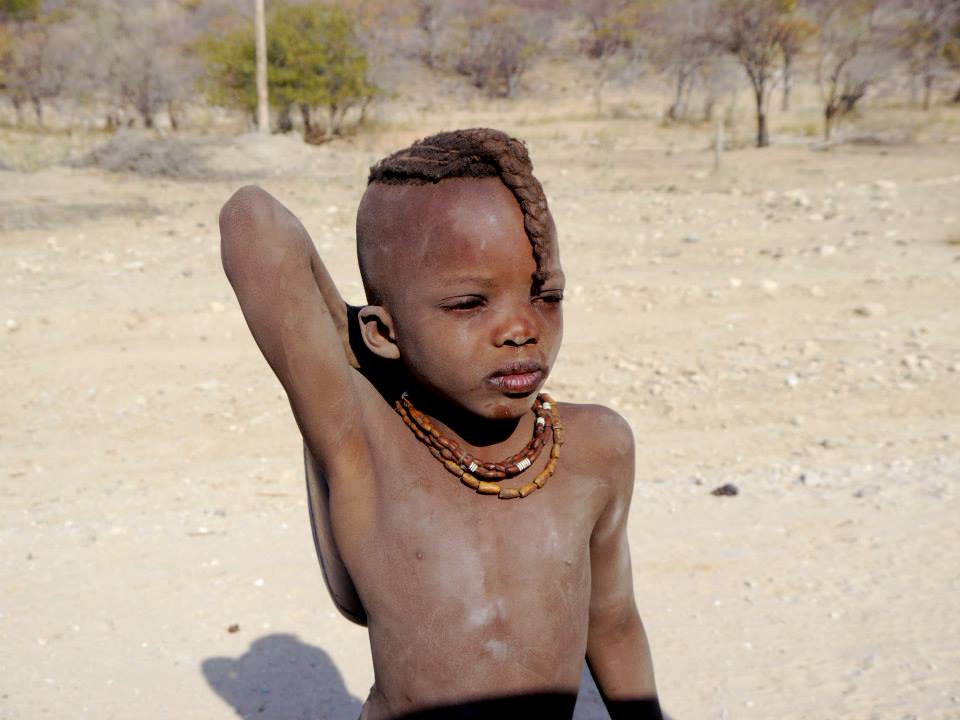
The small fee we paid our local guide included the price of a sack of flour. In exchange for letting us visit and photograph a traditional Himba village, our guide presented it to the village chief as a gift.
The village we visited lay off the main tourist trail, and it was evident that this group of Himbas was not merely adhering to the traditional way of life in order to appeal to tourists. Unlike the Himbas I saw in Swakopmund and Windhoek, they were not posing for money. They were merely going about their daily business and welcomed us into their homes in exchange for a gift (most rural Himba do not participate in a monetary economy).
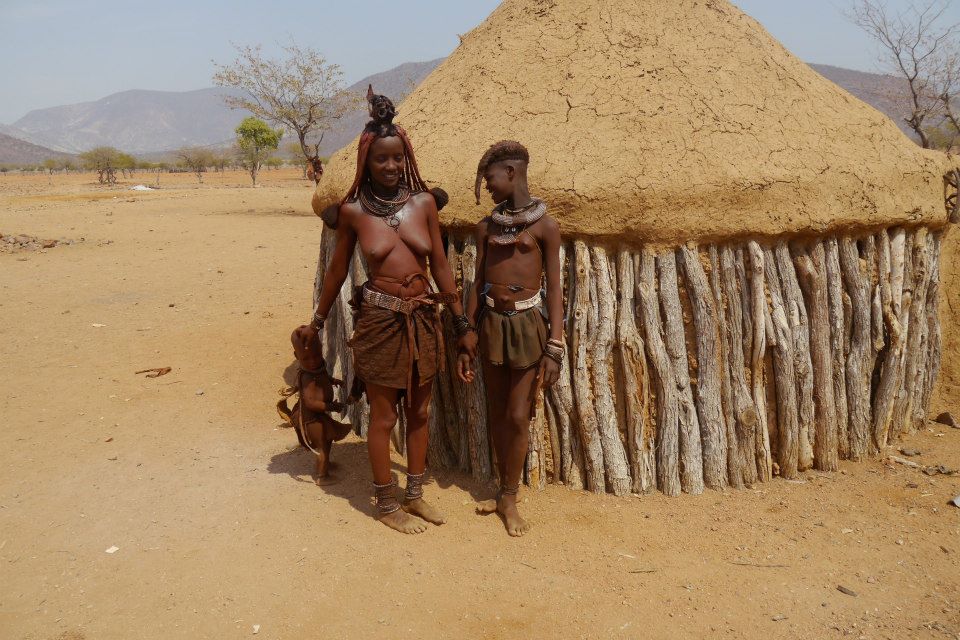
I like to think of myself as culturally aware, but I still fell into the trap of idealizing the Himba for their apparent disregard for the conveniences of modern life. I pictured the Himba living in a time vacuum—in their own distant reality that modernity failed to reach.
Yet, looking closely reveals a people that are very much a part of the modern world. A visit to a Himba village provided us with a powerful illustration of a culture that is struggling to hold onto its roots as the pull of modernity threatens to rip it apart.
In Opuwo, groups of Himba girls sat on the street corners, SMSing their friends. Along the road to the waterfall, young boys herding their goats and cattle donned T-shirts and baseball caps. When we visited the village, most members of the community asked to see pictures of themselves and enjoyed flipping through the photo albums on our ipad. We met Himbas who walked around the streets of Opuwo and spoke to us of their choice to abandon the lifestyle of their forefathers.
It made me realize was that the cultures we often glorify as having the power to resist modernity are, conversely, quite affected by the modern way of life.
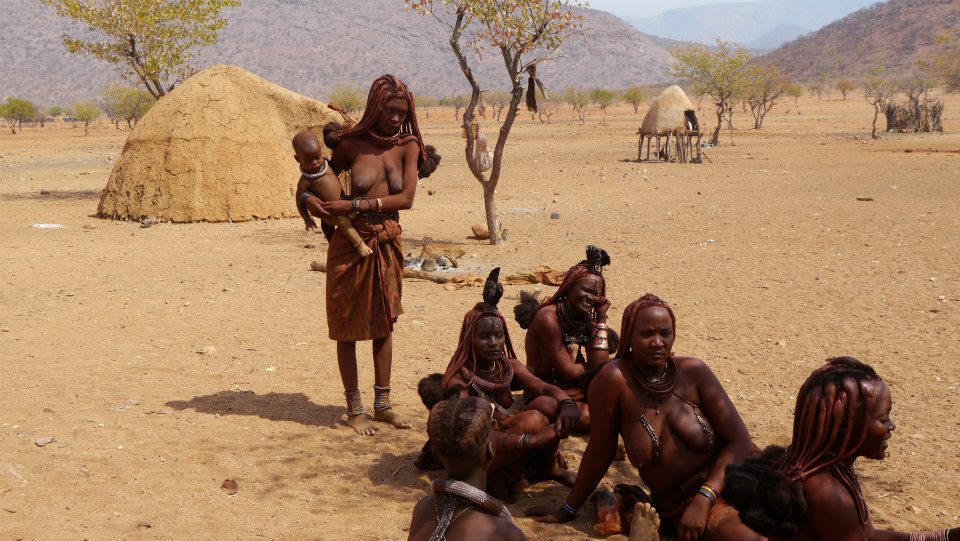
Perhaps the moment that struck me most, was when I watched a little child play with her Caucasian, plastic baby doll. In a community where everything—from houses to clothing to food— is made from animal hides and the rich red earth, a plastic doll seemed as out of place as a fish on dry land. The little girl carried the doll and pretended to feed it. She stared into its blue eyes, and the small plastic eyes stared back at her ochre-clad body.
How the baby-doll made its way to tiny Himba village in one of Africa’s most remote and isolated corners remains a mystery to me.
****
The push and pull of modernity and tradition seems to have found a precarious balance in Kunene, but I couldn’t help but fear that this proud and beautiful culture would slowly succumb to the ways of the West and that its ancient traditions would begin to be forgotten.
While I have little doubt that increased education, development and a higher standard of living are things that countries around the continent–indeed the world–should strive for, I cringe at the implications that this will likely have. For, as much as I would love for cultures such as the Himba to remain intact and for their customs to live on generation to generation, I recognize that it is an increasingly difficult feat in today’s world–that these positive forces are simultaneously what make it difficult for groups of people to sustain their cultural heritage and ways of life.
I think this is one of modernity’s greatest tragedies.
_______________________________
Did You Enjoy this Guide to Visiting a Himba Village in Namibia? Pin It!
